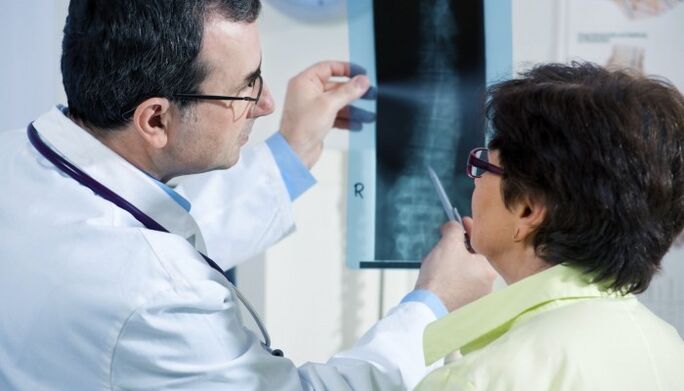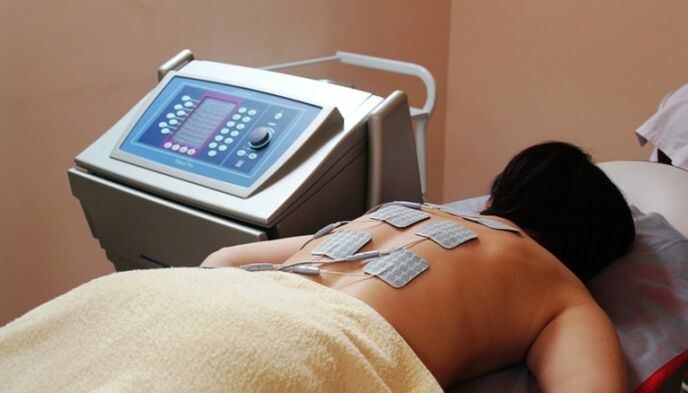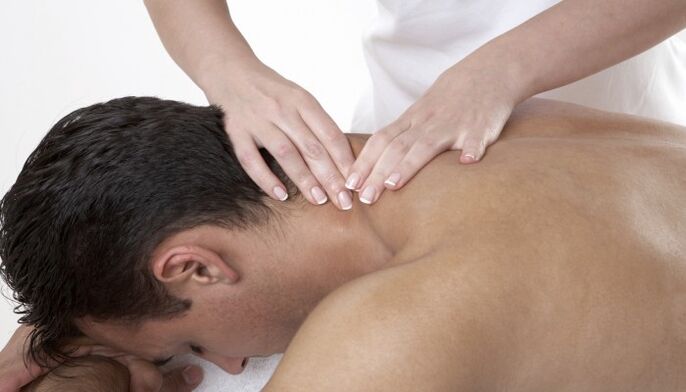Osteochondrosis is a chronic pathology of the spine, the root cause of which is degenerative changes of the intervertebral disc. As the disease progresses, other structures of the spinal column are involved in the pathological process - vertebral bodies, intervertebral joints, ligaments, etc. Sh.
The disease affects people of all ages. Until recently, osteochondrosis was considered a common condition in the elderly, but recently an increase in the incidence of this disease has been observed in the young. Women and men alike often get sick.
Why does osteochondrosis occur?
To better understand what osteochondrosis is, we need to talk briefly about the causes and mechanism of its occurrence.
Pathological changes occur slowly during osteochondrosis of the spine. Years often pass from the onset of the pathological process in the intervertebral cartilage to the onset of the first symptoms of osteochondrosis.
Causes of osteochondrosis
There are many negative factors that directly affect the health of the spine. If their influence is exerted for a long time, then the result is the appearance of abnormal changes in the structures of the spine. And it contributes to the development of osteochondrosis.
For example, what osteochondrosis is, well known people who lead an inactive lifestyle, are overweight. Excessive physical activity, back and neck injuries, some somatic diseases can also lead to the development of this pathology. And aggravated heredity and aging are direct factors that cause degenerative damage to the cartilage tissue of the discs.
How does osteochondrosis develop?
The mechanism of development (or pathogenesis) of osteochondrosis is still controversial and insufficiently studied. It is likely that this disease is formed on the basis of metabolic disorders that occur in the structures of the spinal column.
Under the influence of unfavorable factors, irreversible changes in the cartilage tissue of the intervertebral disc often occur, followed by its gradual destruction (or destruction).
The subsequent pathological process also extends to the bone tissue of the spine with the development of its deformation and irreversible changes in the surrounding structures.
The appearance of such changes in the intervertebral disc directly depends on its anatomical nuances:
- Cartilage does not have its own circulatory system. Its nutrition is provided by the bone tissue of neighboring vertebrates. Therefore, in case of insufficient or excessive physical stress on the spine, in case of circulatory disorders, cartilage nutrition also suffers.
- There are also no nerve fibers in the cartilage. Consequently, with functional overload of the intervertebral disc, the transmission of the nerve impulse that triggers the metabolism will be timely.
- The ability of cartilage tissue self-healing (regeneration) of the intervertebral disc is slowed down due to its structural features.
There are also other factors that obviously contribute to the development of degenerative processes in the cartilage tissue of the intervertebral discs and the emergence of osteochondrosis.
Stages of pathological changes
Based on the available data on the pathogenesis of this pathology, several stages of the degenerative process in the intervertebral disc can be conditionally distinguished. Stages of osteochondrosis of the spine:
- elementary. The cartilaginous tissue of the disc undergoes structural changes under mechanical impact - it becomes dysfunctional. Characterized by the appearance of cracks of different size and depth on the surface of the disk. These cracks are then transformed into rashes (hernias).
- Intermediate. Characterized by the appearance of instability of the damaged area of the spinal column due to abnormal mobility of the spine. In this case, one of the main functions of the spine, protective, is violated. The nerve and vascular rods that run through its bone canals become vulnerable. Develops clear clinical symptoms of the disease.
- Finite. Damaged cartilage tissue is replaced with coarser and denser fibrous tissue. At the same time the intervertebral hernias disappear. While the abnormal mobility of vertebrates is replaced by a sharp restriction of their mobility. Narrowing of the spinal canal often occurs with the development of manifestations of compression of the spinal cord segments.
Therefore, each stage of the disease is characterized by the presence of its own specific symptoms, which undoubtedly plays a major role in the choice of treatment methods for osteochondrosis.
Clinical manifestations
Signs of spinal osteochondrosis are manifested by changes in the bone tissue of the spine. The patient may not have had any complaints for quite some time.
The disease is characterized by a chronic course, alternating with phases of exacerbation and remission.
Often, exacerbation of osteochondrosis occurs under the influence of provoking factors: physical overload, hypothermia, prolonged exposure to an uncomfortable position, for example, in a dream or at work, etc. Sh.
There are many symptoms of this disease, depending on the localization of the pathological process and the severity of structural changes in the cartilage and bone tissue. All these symptoms can be divided into several syndromes. Quite often they are combined.
Radicular syndrome
It affects almost all patients with osteochondrosis of the spine. Compression (compression) of the spinal nerve roots by pathologically altered structures of the spine plays a role in the detection of this syndrome.
The main sign of radicular syndrome is pain, which in a significant amount can spread (irradiate) during the innervation of the corresponding root. Characterized by pain radiation from top to bottom. For example, if the lumbar region is injured, the buttocks will ache and the leg will swell.
The intensity of the pain increases with the rotation of the trunk or neck, with physical activity. Painful sensations are characterized by cutting, smoking, baking.
Also, along with the pain syndrome, the affected area often develops symptoms of impaired sensitivity according to the type of its increase (hyperesthesia), as well as impaired sensitivity, numbness.
If the disease progresses and the cause of the compression is not eliminated, then hyperesthesia is replaced by hypoaesthesia (decreased sensitivity), which is often accompanied by symptoms of loss of damaged spinal root function.
Spinal syndrome
This syndrome develops as a result of spinal cord compression. The most common cause of such compression is an intervertebral hernia.
Decreased sensitivity, reaction to temperature and pain stimuli. Progressive muscle weakness develops in both the limbs and the trunk. Often paresis or paralytic symptoms develop.
Vegetative-vascular syndrome

This syndrome most often develops in the cervical and cervicothoracic localization of spinal osteochondrosis.
The cause of vascular disorders in osteochondrosis is reflex spasm or mechanical contraction of large vessels in the spinal canals. In this case, various symptoms may develop, resembling ischemic circulatory disorders of the main arteries of the brain or limbs. Often this is the cause of diagnostic errors.
In addition, various vegetative disorders often develop. They are most pronounced in women (emotional lability, sleep disturbance, menstrual cycle disturbance, etc. ).
Visceral syndrome
Characterized by pain in the projection of the heart, organs of the gastrointestinal tract, etc. Sh. Often such patients are treated for a long time and absolutely unsuccessfully for any somatic disease.
For example, if the chest region is damaged, back pain in the chest that resembles those with angina may occur. A reflex feeling of heartbeat is often observed.
Diagnostic principles
In addition to the characteristic symptoms, additional examination methods - X-ray of the spine, computed tomography and magnetic resonance imaging - play an important role in the diagnosis and stage of the disease.
Other methods are performed according to the indication, for example, EEG, ECG, Doppler scan of blood vessels, etc. Sh.
Treatment of osteochondrosis

Treatment of osteochondrosis of the spine is an integrated approach. When choosing this or that method of treatment, it is necessary to assess the degree of damage to the structures of the spinal column, the nature and severity of clinical manifestations, as well as the stage of the disease (exacerbation or remission). .
Preventive measures aimed at reducing the incidence of disease exacerbation and maintaining the structure of the spine and intervertebral discs also play an important role in the treatment of osteochondrosis of the spine.
Tactics during aggravation
An important condition for the treatment of the disease during this period is the creation of rest of the damaged area of the spine. To do this, the patient is prescribed a bed rest using various tools to create immobility of the injured spinal segment.
In some cases, hospitalization in a neurological department is required.
Medical treatment
Various medications are prescribed to reduce the intensity of pain during osteochondrosis:
- Nonsteroidal anti-inflammatory drugs (NSAIDs);
- Analgesic;
- Muscle relaxants.
In the absence of effect of their use, it is advisable to block the innervation of the damaged area using local anesthetics.
Osteochondrosis with localization of the cervix often develops circulatory disorders of the brain. Medications that improve cerebral blood flow are prescribed to reduce such manifestations. It is also necessary to use symptomatic remedies - to relieve nausea and vomiting, improve vestibular disorders, etc. Sh.
In addition, it is advisable to prescribe vitamin preparations (especially group B), antioxidants and some others.
Physiotherapeutic procedures

Treatment of physical factors in osteochondrosis has found wide application. Different methods of physiotherapy are used both in the exacerbation of the disease and in the remission phase:
- In the acute period, ultraviolet radiation, electromagnetic field (UHF) processing, diadynamic current, etc. are used.
- In the remission phase, electrophoresis with various drugs, inductothermia, ultrasound and various types of balneotherapy are prescribed.
Tactics in the remission phase
Treatment of the disease continues after the acute manifestations of the disease have subsided. The goal of such therapy is to reduce the incidence of exacerbations and regenerate the bone and cartilage of the spine.
Medication prescribed for the acute phase of the disease continues. Chondroprotectors - remedies that improve cartilage condition - can be used during this period.
In addition to physiotherapy methods, massage and physiotherapeutic exercises are also used.
ᲛMassage

The main effect of massage is to improve blood circulation in the injured area and strengthen the muscular corset. Also, professional performance of massage movements allows you to remove the muscle spasm that usually accompanies this pathology.
Massage should therefore be performed by a specially trained specialist who is fluent in this method of treatment. Improperly or improperly performed massage can lead to complications or exacerbation of the disease.
Therapeutic Exercise (LFK)
Dosed and specially selected physical exercises are the basis of exercise therapy. Such a set of exercises is chosen by the doctor individually for each patient. The principle of selection of exercise therapy exercises is to reduce the physical load on the injured area of the spine.
The action of physiotherapy exercises is aimed at improving blood supply and lymph flow to the affected area, strengthening muscle tissue.
These exercises should be done every day. Typically, individual or group lessons are initially conducted with the instructor, then the patient can perform a set of exercises at home independently.
Prevention of exacerbation
Preventive measures for the exacerbation of osteochondrosis of the spine are aimed at eliminating all provoking factors:
- During prolonged standing and sitting it is necessary to monitor the correct posture and posture.
- For prolonged static stress (for example, working at a computer) it is helpful to take a regular break, during which you should do a warm-up or a set of exercises recommended by your doctor.
- Hypothermia should be avoided.
- It is important to sleep properly during osteochondrosis, take care of the bed - a mattress and pillow. Ideally, they should be orthopedic.
- Reduction of excess weight and timely correction of accompanying somatic and endocrine pathology are mandatory.
And when the slightest symptoms of spinal disease appear, you should not delay a visit to the doctor. After all, the earlier you start treatment for spinal osteochondrosis, the better its results.















































